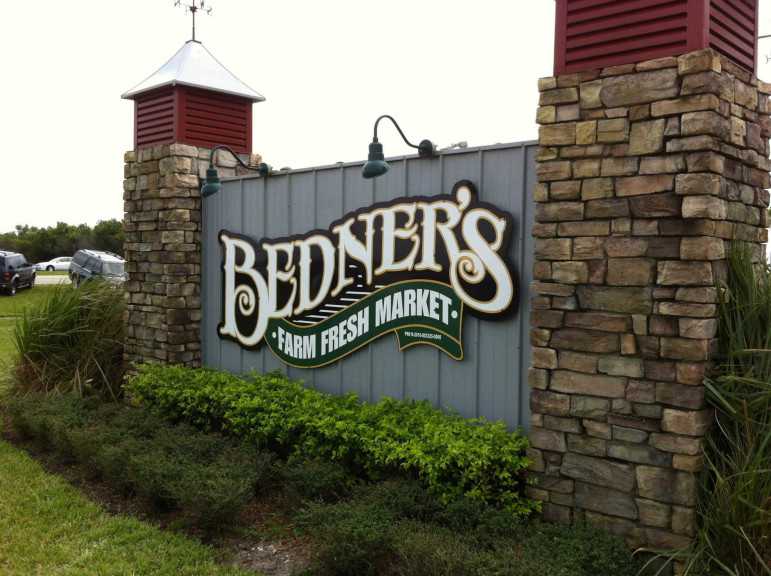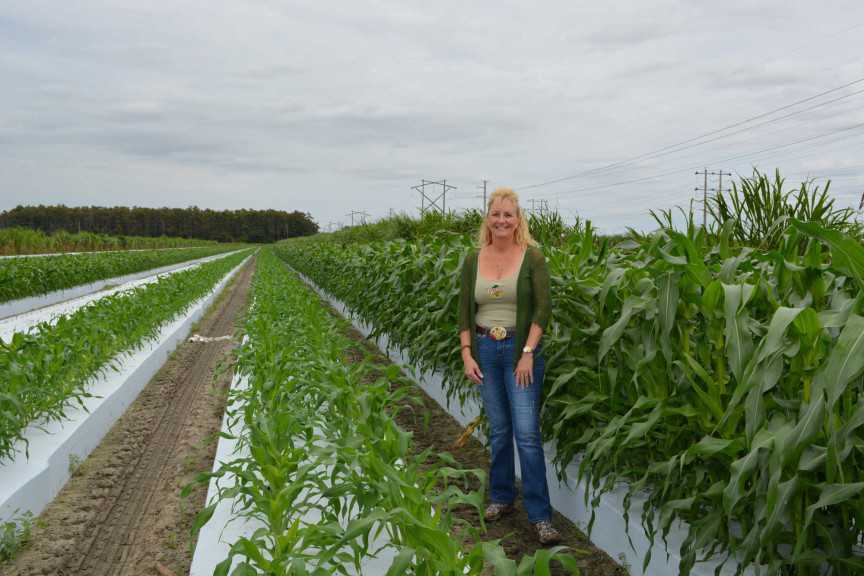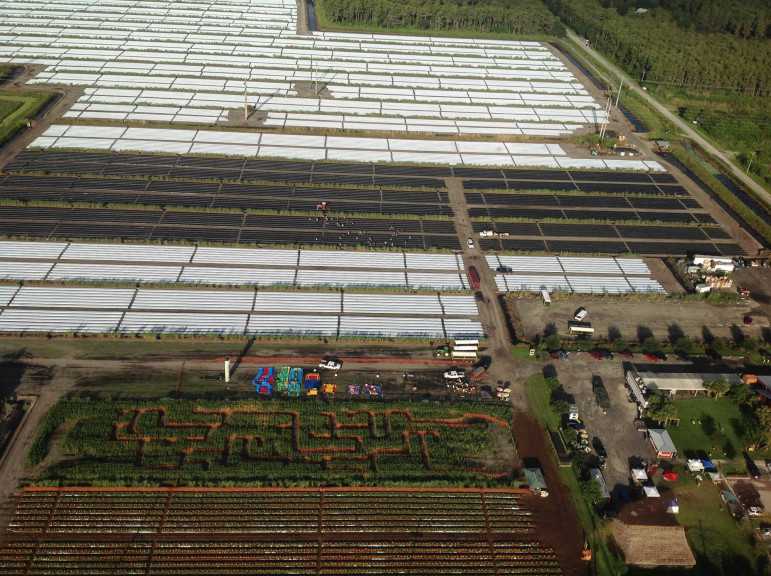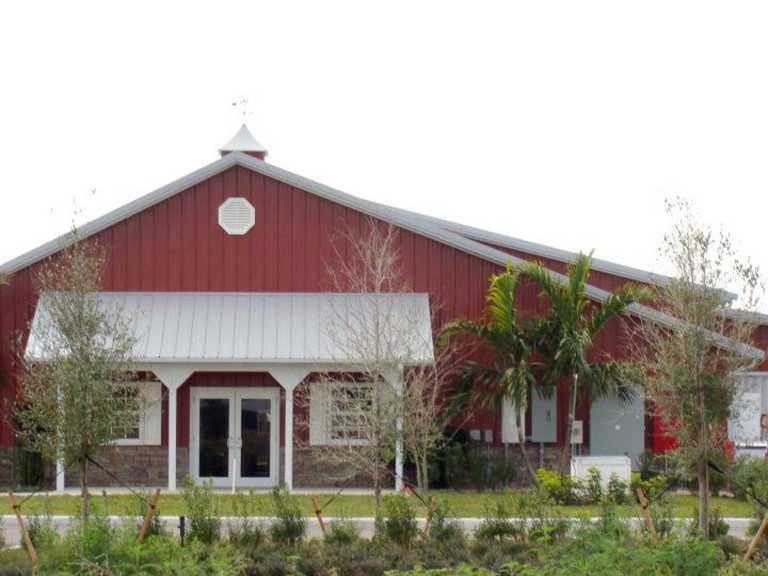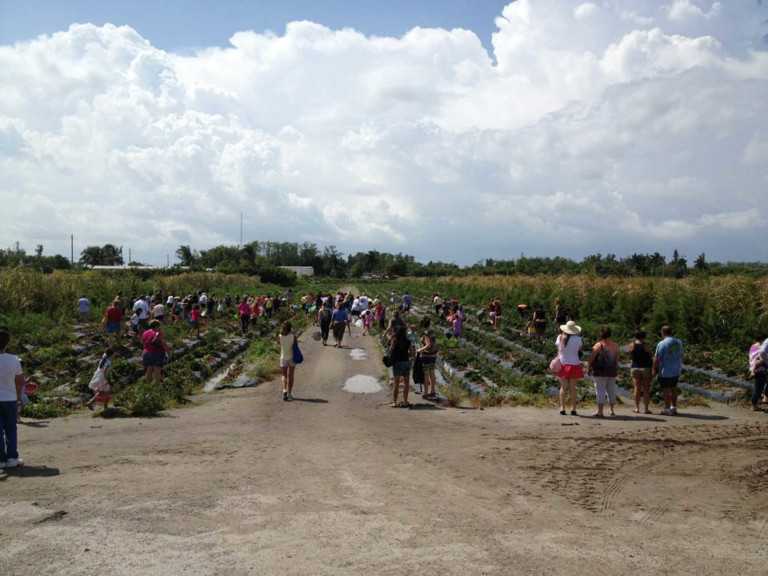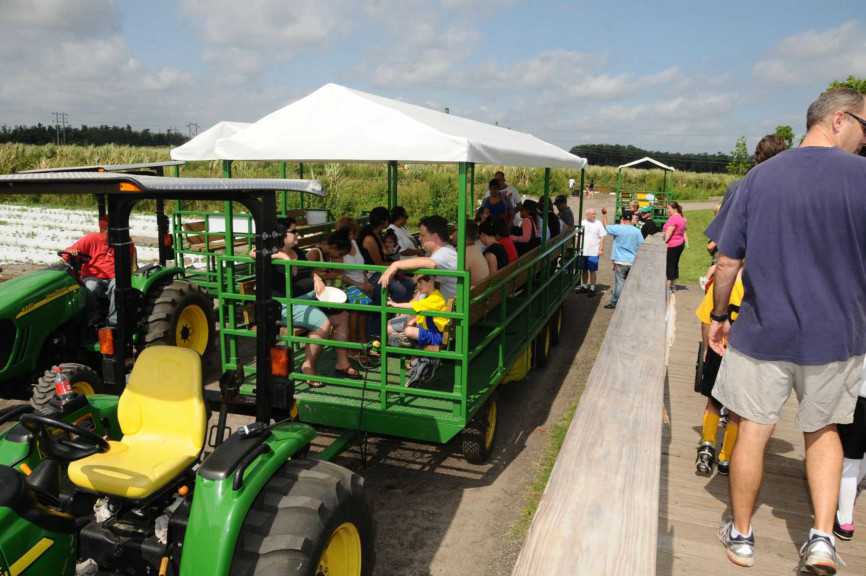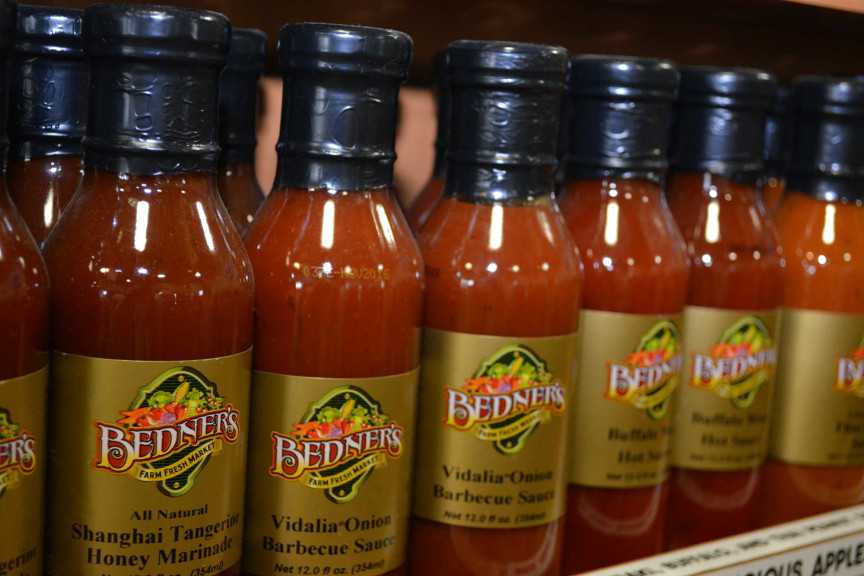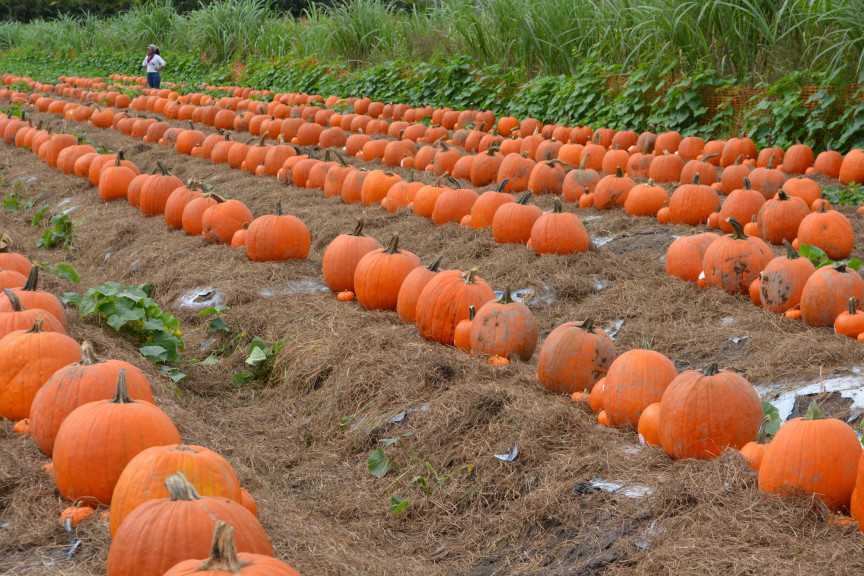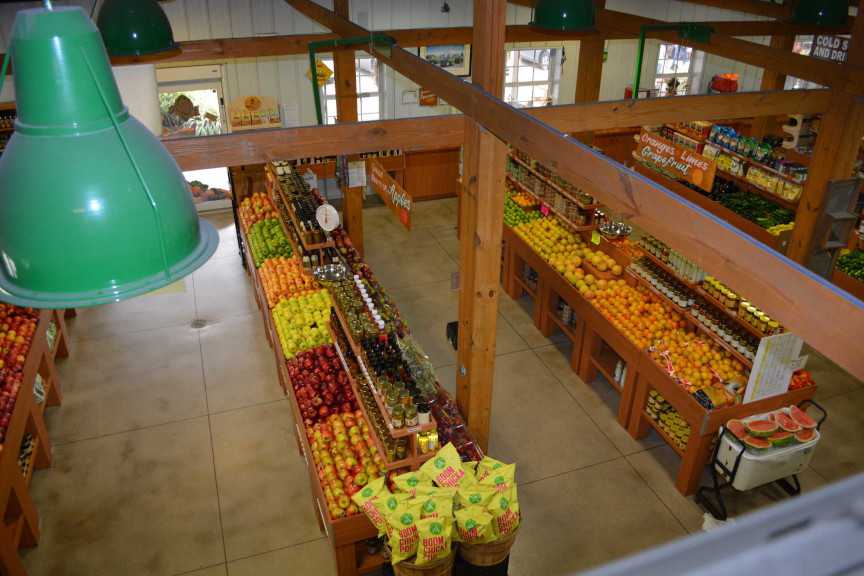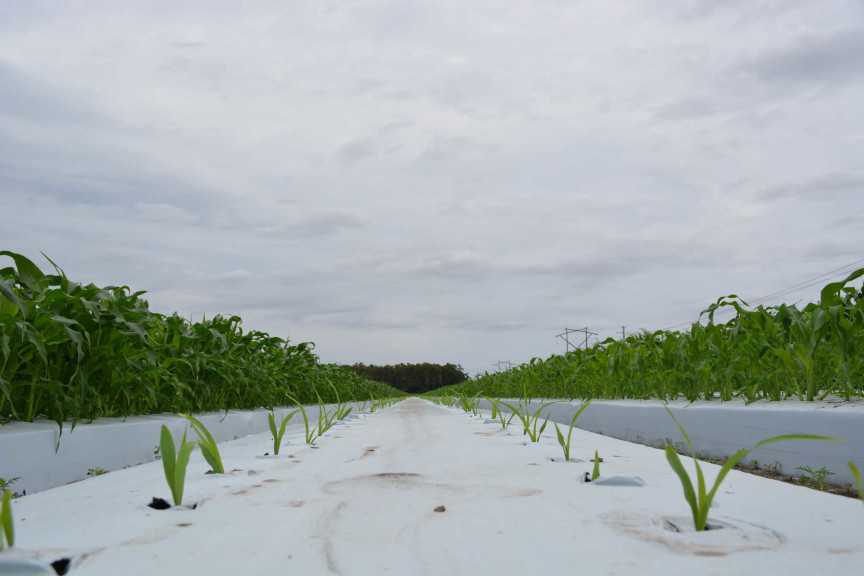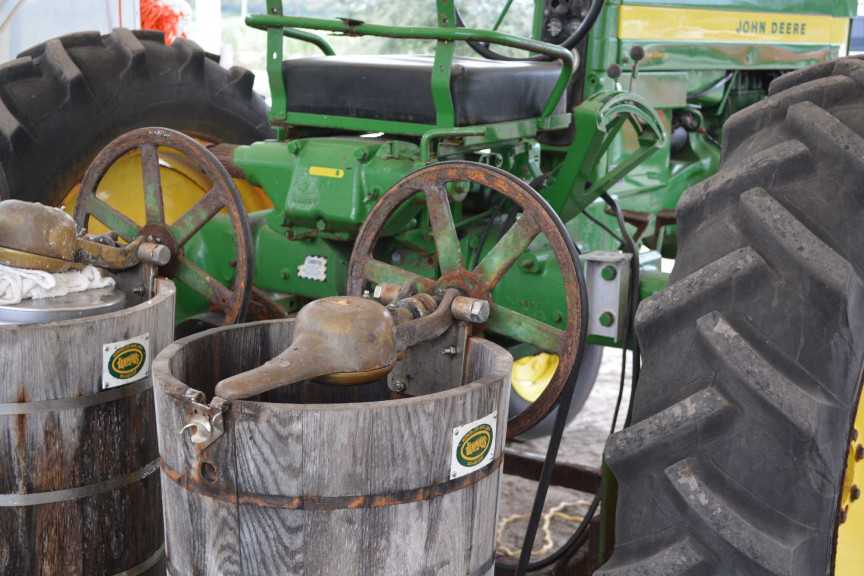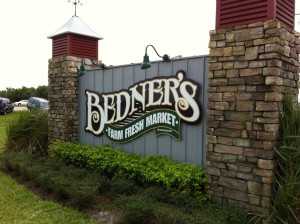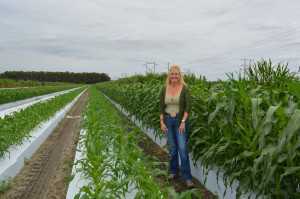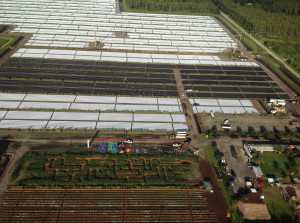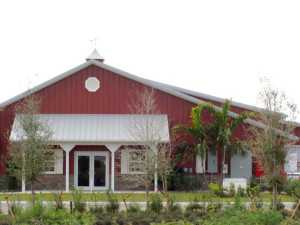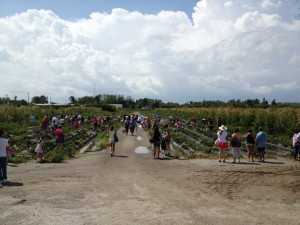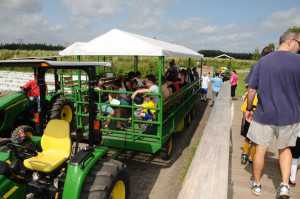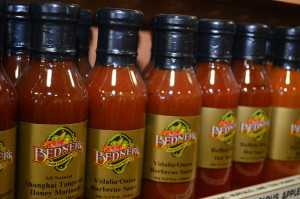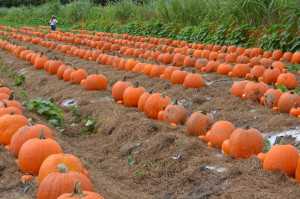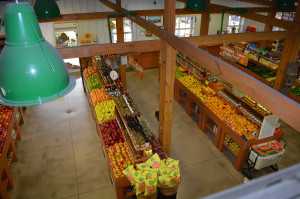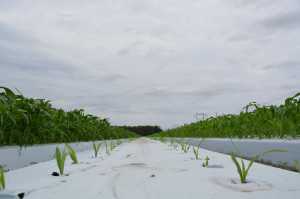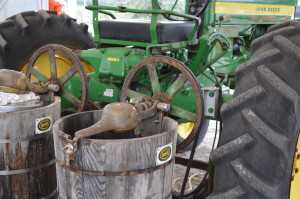Playing To The Public Pays Off For South Florida Farm
[blackoutgallery id=”54122″]
When Arthur Bedner moved to South Florida from Pennsylvania with his new bride Henrietta in the 1950s, he had a vision of building a sustainable farming operation that in some ways was still in frontier country. That vision was realized with Arthur’s hard work and progressive attitude in adopting new technologies and techniques.
Though Arthur and Henrietta have passed, the Bedner family continues the farming tradition with Arthur’s sons Charles, Bruce, Steve, and grandson Jesse. The commercial operation is impressive with 800 acres of bell pepper and 400 acres of cucumbers and a packinghouse in Palm Beach and Martin counties.
“Up until about 25 years ago, my father-in-law was doing everything,” says Marie Bedner, who is married to Steve and is active in the family business. “He saw the need back then to get computerized if we planned to stay in farming. That’s when I became involved with the business to help with technology adoption and I got us more involved in the industry, joining groups like FFVA.”
Retail To Diversify
The face of farming has changed dramatically in the half century the Bedners have worked the land in South Florida. “Farming was very profitable here up until NAFTA passed,” says Bedner. “That hit us pretty hard, so we began thinking about ways to diversify. In the early 2000s, we began looking into a retail farm market. The Bedner family actually has a market in Pennsylvania and Steve used to work there in the summers when he was growing up. So, that planted a dream of having a market on our farm.”
A number of factors came together to indicate the time was right for such a venture. During this period, the “buy local” movement was catching steam and continues today. And, there was nothing like a true farm market nearby.
“When we just had the commercial side, we’d get calls from schools and other groups wanting to come out and tour our farm, but we just didn’t have any way to accommodate them,” says Bedner. “But, that told us there was a demand and an opportunity to engage with the public.”
The family had a perfect location in Boynton Beach for just such a venture on 80 acres just off the busy thoroughfare of Lee Road. “We started the zoning and permitting process in 2005 and opened our market in fall 2009,” says Bedner. “From there, it was a crash course in learning the retail experience — everything from running the cash registers to credit card machines.
“Farming is hard work, but dealing with the public is even more demanding. You can expect compliments and complaints. But, we see complaints as an opportunity to correct problems and make the experience better for our customers.”
In its fourth growing season, the popularity of Bedner’s Farm Fresh Market (Bedners.com) is evidenced by its full parking lot and huge weekend crowds. The business has enjoyed growth every season.
One of the new skills required in running a market and agritainment venue is coming up with ideas to keep people coming back. But, the foundation is access to fresh, local fruit and vegetables. The farm offers U-Pick strawberries, tomatoes, and peppers. Sweet corn, beans, cauliflower, broccoli, squash, eggplant, kale, collards, spinach, and a variety of lettuces are planted to feed the retail market.
“We’ll start picking around Thanksgiving and should run through the end of May,” says Bedner. “We stagger the plantings to keep a steady supply coming into the market. We also buy from other local growers to supplement our supply.”
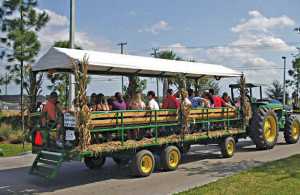
Photo courtesy of Bedner’s Farm Fresh Market
With an abundant supply of fruits and vegetables on hand, other activities are offered to keep customers occupied and coming back. The farm celebrates its Fall Festival on weekends starting the last week in September and running until the end of October. Bedner says this agritainment option is a great means to generate business before the U-Pick and other crops get ready for harvest. The festival weekends draw crowds between 5,000 and 9,000 people.
The Fall Festival lives up to its name with corn mazes, bounce houses, face painting, tram rides, ice cream, craft vendors, pony rides, and more. “We wanted to create an experience where families can come out and spend the day,” says Bedner. “And, while they are enjoying the day, hopefully they visit the market and buy some produce.”
Managing all the activities, running the market, and growing the crops would be impossible without the use of technology, says Bedner. “We have LEAF tablets with credit card scanners that we use on the farm,” she says. “The devices can track peak hours of activity, which helps us better plan for when we need more help in place to serve the crowds. Another very important thing is putting the right people in the right place in the market or on the farm. Quickbooks has been a must in helping us keep organized as well.”
The market employs about 30 staff, and that number will vary based upon the seasonal peaks and valleys.
Another consideration in running a retail market and agritainment venue is liability. Bedner says a good insurance policy is a must, along with providing as safe an environment as possible with adequate staff to preside over activities.
Bedner also credits the Florida legislature and Gov. Rick Scott for signing the SB 1106 agritourism bill. The bill limits the liability of land owners who are providing agritourism activities, provided risks are posted clearly and visibly in two spots on the farm.
Getting The Word Out
Marketing is another learning curve the Bedners have had to tackle in promoting the retail market. “We are still getting our arms around the marketing, but it has really been interesting to learn,” says Bedner.
Facebook has been an integral part of the farm’s marketing efforts. Bedner’s Farm Fresh Market Facebook page, at presstime, had nearly 13,000 likes. “It really has grown by word of mouth,” she says. “Social media is a great way for us to share information and allows our customers to share their experiences on the farm.”
To grow her Facebook fan base, Bedner will provide giveaways throughout the year to encourage people to “like” the page. “The best part of it is social media is free and such a powerful tool,” she says. “I’ve also built a large eMail list, which I use to send regular eNewsletters to customers with specials and items for sale in the market, as well as any of the entertainment options. I’ve gone around the community and spoke to a number of different civic groups and always promote the Facebook page and often do drawings to get email addresses.”
A TV ad runs on a local channel in the community, which normally airs during the “Today Show.”
“People usually have the TV on when they are getting ready for the day,” she says. “They might not be watching, but they are actively listening.”
Bedner also has gotten to know local media to get listed on their community calendars and the farm has become a go-to source when ag-related issues come up in the press.
She adds it is important to keep plugged in on what’s happening in the popular culture and how that might impact the market’s business. “If Dr. Oz says to eat or avoid eating something, we will have many customers talking about it. It never gets boring. I also realized early on that just because I like or enjoy something doesn’t mean the rest of South Florida will, so be flexible.”
Agritainment Into Agvocacy
“Community involvement is important to us and educating the public about where and how their food is grown is so critical now that agriculture is such a small segment of our population,” says Bedner. “Right now, I think we really need to get the message out how important it is to buy produce grown in the USA. That starts with your local farmer.”
What about future consumers? Literally, hundreds of kids have toured the Bedner’s farm since the market opened. The tours last 90 minutes and teaches how crops are grown, along with an added benefit of viewing some wildlife from the Everglades Reserve, which is adjacent to the property. From late September until the end of May, two tours of 40 to 90 children run per day during the school week.
“This is a lot of hard work, but on the other side, it has been so rewarding for my husband and his brothers to get that instant feedback about how fresh and good the produce they grow is to our customers,” says Bedner. “We’ve grown the market every year because of that and have plans to expand in the future.”





